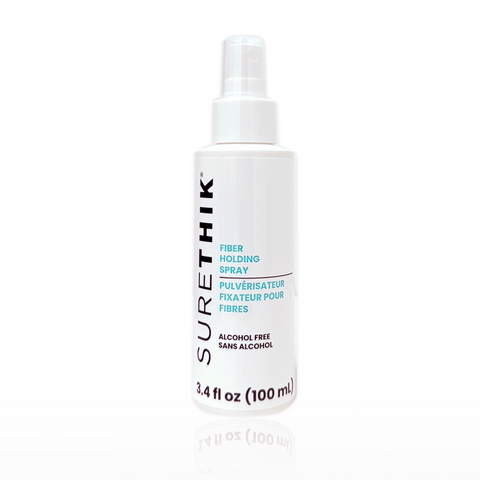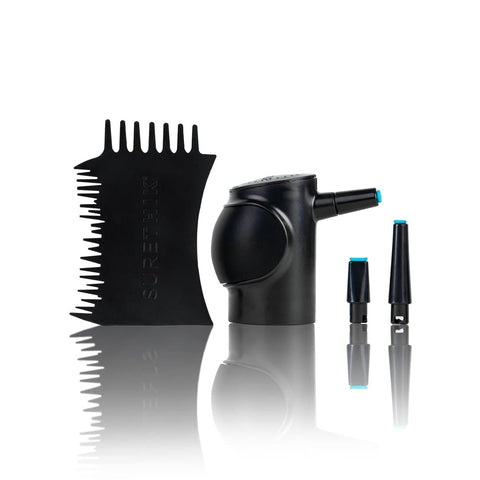
The Art of Tangle-Free Hair: How to Combat Knots in Fine Hair and Keep Your Hair Looking Fabulous
If you have fine hair, you may be all too familiar with the frustration of dealing with tangles. Fine hair is prone to tangling, and it can be a challenge to keep it looking smooth and frizz-free. In this blog post, we'll explore why fine hair tangles so easily, why it's more prone to tangling than other hair types, and what you can do to prevent it and keep your fine hair looking its best.
Why Does Fine Hair Tangle So Easily?
Tangles occur when hair strands become twisted and interwoven with each other. This can happen for a variety of reasons, such as wind, friction, and humidity. When hair is fine, it is more prone to tangling because it has a smaller diameter than thicker hair. Fine hair is also typically smoother and less textured than other hair types, which makes it easier for strands to slip and slide against each other and become tangled.
Another factor that can contribute to tangling in fine hair is the way it is cut and styled. If you have fine hair that is cut in layers or has a lot of texture, it can be more prone to tangling because the shorter strands can easily tangle with each other. Similarly, if you style your fine hair with braids or other intricate styles, this can also lead to tangling.

Why Is Fine Hair More Prone to Tangling?
In addition to the factors mentioned above, there are a few other reasons why fine hair is more prone to tangling than other hair types. Firstly, fine hair is more susceptible to damage than thicker hair. This means that if your fine hair is damaged, it may be more prone to tangling because the strands are weaker and more likely to break and tangle. Secondly, fine hair is more easily affected by environmental factors such as wind, humidity, and heat. When these factors come into contact with your fine hair, they can cause the strands to become tangled and knotted. Finally, fine hair is often more static-prone than other hair types. This means that when you brush or style your hair, the strands may become charged with static electricity, causing them to repel each other and become tangled.
How to Prevent Tangling in Fine Hair
Fortunately, there are several steps you can take to prevent tangling in your fine hair. Here are some tips to keep in mind:
- Use a gentle shampoo and conditioner: Fine hair is delicate, so it's important to use a shampoo and conditioner that is gentle and won't strip your hair of its natural oils. Look for products that are specifically designed for fine hair and avoid anything that contains harsh sulfates or other harsh ingredients. Our Recommendation:
SureThik Thickening Shampoo is an ideal solution for those who have fine hair that tends to get tangled easily. This gentle, sulfate-free shampoo is formulated with nettle extract, hydrolyzed keratin, and aloe vera, which work together to thicken and strengthen hair while promoting healthy growth. The shampoo also has a regulated pH of 5.5-6, which helps to support healthy hair growth and prevent tangling.
The low pH of SureThik Thickening Shampoo helps to maintain a healthy pH balance on the scalp, which can help to prevent damage to the hair shaft. A low pH like this helps to keep the hair cuticle closed, which in turn helps to keep the hair looking shiny and healthy. When the hair cuticle is open, it can cause damage to the hair shaft, leading to issues such as split ends, breakage, and tangling.
Nettle extract is a key ingredient in SureThik Thickening Shampoo, as it has been shown to help stimulate hair growth and reduce hair loss. Nettle extract is also known for its ability to improve the overall health of the scalp, which can help to promote healthy hair growth. Hydrolyzed keratin is another important ingredient, as it can help to strengthen the hair shaft, reduce breakage, and improve overall hair health. Finally, aloe vera is known for its moisturizing and soothing properties, making it an excellent ingredient for those with dry or damaged hair. By using SureThik Thickening Shampoo regularly, you can help to strengthen and thicken your hair, making it less prone to tangling. Additionally, the natural ingredients in the shampoo can help to improve the overall health of your scalp, which can lead to healthier, stronger hair. SureThik Thickening Shampoo is free from harsh chemicals, sulfates, parabens, and silicones, making it a safe and gentle option for those with sensitive skin or hair.

SureThik Thickening Conditioner is a great conditioner for those who suffer from thinning hair that tends to get tangled easily. This conditioner is formulated with nourishing ingredients like jojoba oil, caffeine, and creatine, which work together to strengthen and thicken hair while promoting healthy growth. Just like the shampoo, the conditioner is also free from harsh chemicals, parabens, silicones, and sulfates, making it a safe and gentle option for those with sensitive skin or hair.
Jojoba oil is a key ingredient in SureThik Thickening Conditioner, as it helps to moisturize and nourish the hair and scalp, leaving hair feeling softer and less prone to tangling. Caffeine is another important ingredient, as it has been shown to help stimulate hair growth and reduce hair loss. Finally, creatine is known for its ability to strengthen the hair shaft and improve overall hair health.
To apply SureThik Thickening Conditioner, start by washing your hair with a SureThik Thickening Shampoo. Once you have rinsed the shampoo out of your hair, apply a generous amount of conditioner to your hair, focusing on the ends and mid-lengths. Leave the conditioner in your hair for 2-3 minutes, then rinse thoroughly with warm water. For best results, use the conditioner regularly as part of your hair care routine. By using SureThik Thickening Shampoo and Conditioner regularly, you can help to strengthen your hair, making it less prone to tangling. Additionally, the natural ingredients in the shampoo & conditioner can help to improve the overall health of your scalp, which can lead to healthier, stronger hair. This hair routine will help you moisturize and nourish your hair, leaving it feeling soft and smooth.

- Brush your hair gently: When you brush your fine hair, be gentle and avoid pulling or tugging on the strands. Use a brush with soft bristles and start at the ends of your hair, working your way up to the roots.
- Avoid over-washing: While it's important to keep your hair clean, over-washing can strip your hair of its natural oils and make it more prone to tangling. Try to wash your hair every other day or every few days, depending on your hair type and how oily your scalp is.
- Use a leave-in conditioner: Applying a leave-in conditioner to your fine hair can help to detangle and smooth your strands. Look for a lightweight, non-greasy formula that won't weigh your hair down.
- Protect your hair from environmental factors: To prevent tangling caused by wind, humidity, and other environmental factors, try wearing a hat or scarf when you're outside. You can also use a styling product that provides extra hold and protection against humidity.
- Choose the right hair accessories: Hair accessories like elastic bands and hair ties can also cause tangling if they're too tight or if they snag on your hair. Choose accessories that are gentle on your hair, such as scrunchies or silk hair ties.

- Get regular trims: Regular trims can help to prevent tangling by getting rid of split ends and keeping your hair healthy. Aim to get a trim every 6-8 weeks, or as recommended by your stylist.
- Be careful with heat styling: Heat styling tools like flat irons and curling irons can be damaging to fine hair and can also cause tangling. If you must use heat styling tools, make sure to use a heat protectant spray beforehand and avoid using high heat settings. You can also try using alternative heat-free styling methods, such as foam rollers or air-drying your hair.
Final Takeaways
In conclusion, fine hair is more prone to tangling than other hair types due to its smaller diameter, lack of texture, and susceptibility to damage and environmental factors. However, by following the tips outlined above, you can prevent tangling and keep your fine hair looking healthy and smooth.
Remember to choose gentle hair care products like SureThik, brush your hair gently, avoid over-washing, use a leave-in conditioner, protect your hair from environmental factors, be careful with heat styling, choose the right hair accessories, and get regular trims. With a little bit of extra care and attention, you can keep your fine hair looking its best and minimize the frustration of dealing with tangles.






